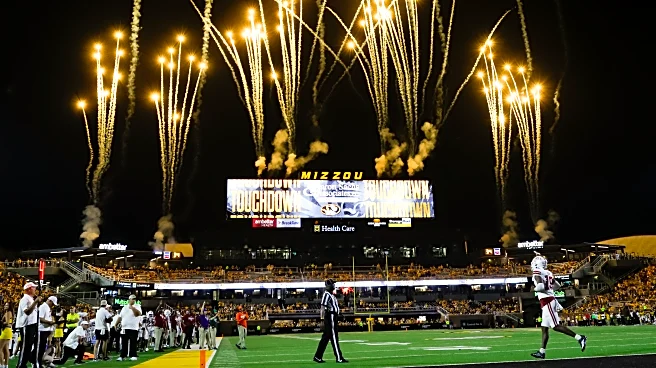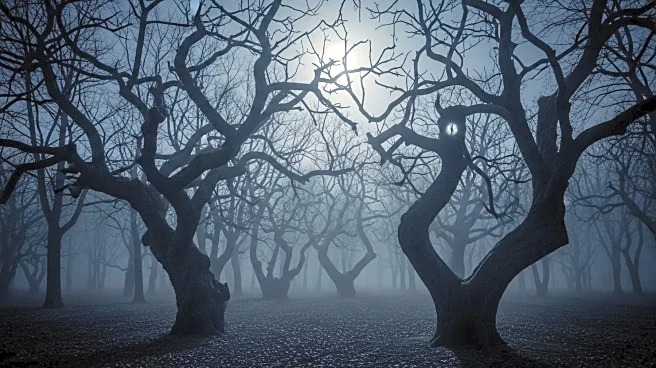What's Happening?
A new wave of gothic horror novels is emerging, with authors exploring diverse settings that play a crucial role in their storytelling. Yah Yah Scholfield's debut novel, 'On Sundays She Picked Flowers,' is set in the forests of southern Georgia, where the protagonist confronts ghosts from the past. Vincent Tirado's 'You Should Have Been Nicer to My Mom' features a family trapped in a claustrophobic home, revealing dark secrets. Leila Siddiqui's 'The Glowing Hours' reimagines the historical gathering at Villa Diodati, adding a haunted twist. Other authors, like L.L. Madrid and Linda Hamilton, draw inspiration from unique locations such as Arizona's quirky towns and Salt Lake City's historical backdrop. These settings are integral to the narratives, enhancing the gothic elements and character development.
Why It's Important?
The exploration of diverse settings in gothic horror novels highlights the genre's adaptability and its ability to resonate with contemporary audiences. By incorporating unique locales, authors can create immersive experiences that reflect cultural and historical contexts. This trend not only enriches the genre but also broadens its appeal, attracting readers interested in both horror and the intricacies of different environments. The settings serve as more than just backdrops; they become characters themselves, influencing the plot and the characters' interactions. This approach can lead to a deeper understanding of societal issues, such as the impact of historical events and cultural dynamics, through the lens of horror fiction.
What's Next?
As these novels are released, they may inspire further exploration of global settings in gothic horror, encouraging authors to delve into lesser-known locales and historical periods. This could lead to a diversification of the genre, with more stories reflecting varied cultural perspectives and experiences. Publishers and readers alike may seek out these innovative narratives, potentially influencing future trends in horror literature. Additionally, the success of these novels could prompt adaptations in other media, such as film and television, further expanding their reach and impact.
Beyond the Headlines
The use of global settings in gothic horror novels raises questions about the ethical representation of cultures and historical events. Authors must navigate the balance between creative storytelling and respectful portrayal of real-world contexts. This trend also highlights the genre's potential to address complex themes, such as colonialism and cultural identity, through allegory and metaphor. As gothic horror continues to evolve, it may serve as a powerful tool for examining societal issues and fostering cross-cultural understanding.












